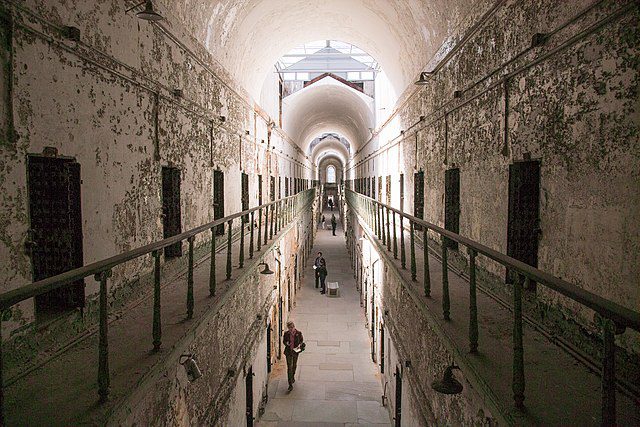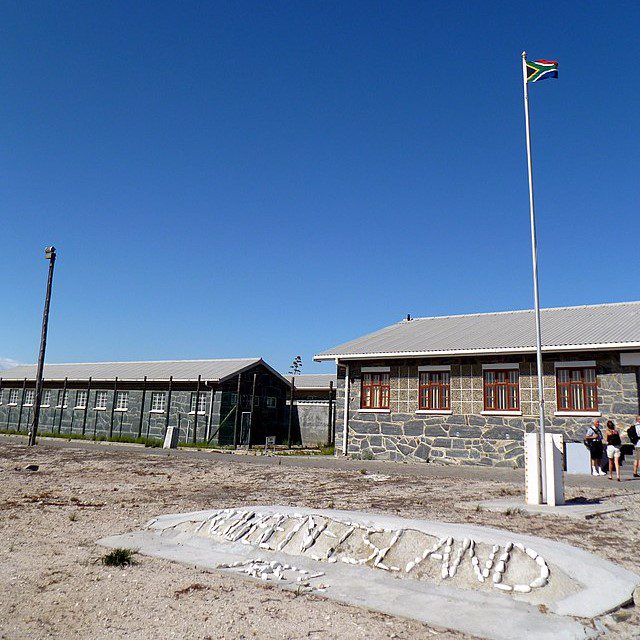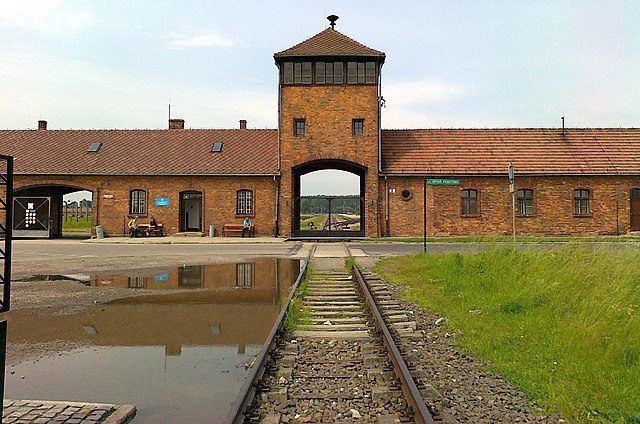Examples of Buildings Transformed
In the United States and around the world, there are indeed buildings with dark histories that have been preserved, adapted, and transformed into sites that take steps to repair the wrongs of the past. The meaning of a building can be changed through an honest assessment of its past.
As preservation architect Jack Pyburn noted in his 2021 op-ed, “Through a reuse dedicated to community-supporting uses, the Roundhouse could finally realize its original aspirational goals. Rather than bury its past by demolition, let the Roundhouse confront the history of abuse through education, community engagement, and the actions of community service-minded tenants.”
In Philadelphia, Eastern State Penitentiary “was the world’s first true “penitentiary,” a prison designed to inspire penitence, or true regret, in the hearts of prisoners.” The building has been converted into a museum and educational center that “interprets the legacy of American criminal justice reform, from the nation’s founding through to the present day, within the long-abandoned cell blocks of the nation’s most historic prison,” designed to “move visitors to engage in dialogue and deepen the national conversation about criminal justice” (quotes taken from the organization’s website).

In Fort Worth, Texas, a former KKK headquarters building, one of the last remaining purpose-built KKK buildings, will house the Fred Rouse Center for Arts and Community Healing. As described by the project leadership:
“What if, instead of destroying the building, we could transform this monument to hate into a beacon of truth-telling, reconciliation, and healing?”
“This building is a spatial manifestation of our national legacy of violence and racial terror. As the United States moves towards dismantling systems of oppression, this project is an opportunity to declare our collective agency in designing a just future for all.”
In South Carolina the City of Charleston and the South Carolina African American Heritage Commission restored the Old Slave Mart, one of the only known extant buildings used as a slave auction gallery. The museum now interprets the history of the city’s slave trade.

In South Africa, Robben Island served as a prison for generations of apartheid governments. Nelson Mandela spent many years here. Today the site is a historic site, museum and memorial. Robben Island is listed as a South African National Heritage Site as well as a UNESCO World Heritage Site. The Robben Island mission statement is “To preserve and promote Robben Island as an inspirational national treasure and World Heritage Site that symbolizes the triumph of the human spirit over extreme adversity and injustice.”
Also in South Africa, “Constitution Hill is a living museum that tells the story of South Africa’s journey to democracy. The site is a former prison and military fort that bears testament to South Africa’s turbulent past and, today, is home to the country’s highest court, the Constitutional Court, which endorses the rights of all citizens.”
“There is perhaps no other site of incarceration in South Africa that imprisoned the sheer number of world-renowned men and women as those held within the walls of Constitution Hill’s Old Fort, Women’s Jail and Number Four. Nelson Mandela. Mahatma Gandhi. Joe Slovo. Albertina Sisulu. Winnie Madikizela-Mandela. Fatima Meer. They all served time here, but the precinct also confined tens of thousands of ordinary people during its 100-year history. They were men and women of all races, creeds, ages and political agendas, children too, the everyman and the elite. In this way, the history of every South African lives here.”
In Poland, Auschwitz-Birkenau was the largest of the German Nazi concentration camps and extermination centers. Over 1.1 million men, women and children lost their lives here, primarily Jews, but also other people considered undesirable by the Nazis. All over the world, Auschwitz has become a symbol of terror, genocide, and the Shoah. The site and its buildings have been converted into a museum, a memorial, and an education center where visitors, students, and scholars can confront the most monstrous development of the modern world.

Next Up:
